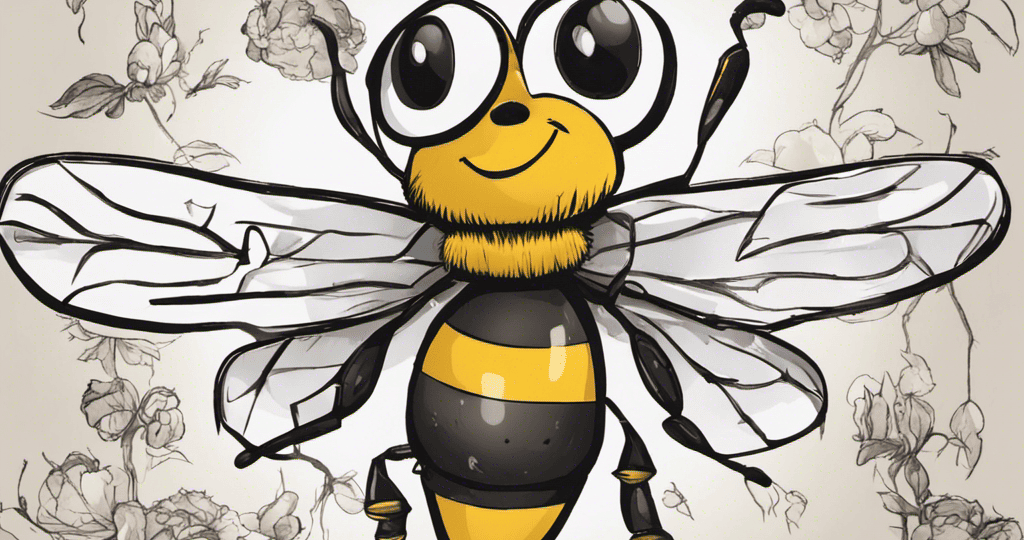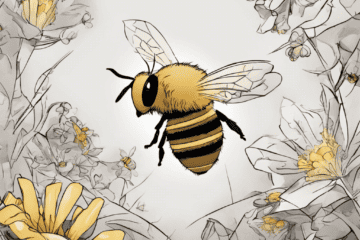Our planet’s survival is deeply intertwined with the existence of bees. These small but mighty creatures play a critical role in maintaining the delicate balance of life on Earth. Those tiny buzzing creatures, play a critical role in our ecosystem and food production. However, their populations are rapidly declining, putting our very existence at risk. It’s time for us to take action and “bee” the change needed to save these invaluable pollinators and protect our planet.
But before you delve into these actionable steps, it’s essential to understand why bees hold the key to our survival. To explore the fascinating reasons behind their significance, check out our complementary blog post, “Bee-lieve It or Not: 5 Reasons Bees Hold the Key to Our Survival!“ It will deepen your appreciation for these remarkable creatures and reinforce the urgency of our collective efforts.
If the bee disappeared off the face of the Earth, man would only have four years left to live.
Albert Einstein
No more bees, no more pollination, no more plants, no more animals, no more man
But we don’t need to feel afraid. Just to take action! What can we do to save bees from extinction?
Tip #1: No more sprays, so the bee stays!
We know, many insects and pests are annoying, and you might want to get rid of them, but bees can be poisoned because of the garden sprays you use.

Many individuals take up beekeeping as a delightful hobby or a small venture for profit, cultivating these fascinating creatures in their gardens. However, if you aren’t one of them, you might assume that the impact of using sprays on your plants doesn’t concern you. After all, you don’t have bees to worry about, right? But the reality is different; it does concern all of us.
Whether or not we keep bees, we are all interconnected in the grand tapestry of nature. The actions we take in our gardens have ripple effects on the broader environment and its inhabitants. Using harmful sprays can inadvertently harm not just bees but a plethora of other beneficial pollinators.
Instead of resorting to chemical solutions, there are plenty of pollinator-friendly methods to protect your plants from invasive pests. Embracing natural approaches can help maintain a healthy balance in your garden while safeguarding the well-being of these essential creatures.
To get started, you can explore numerous do-it-yourself natural pesticide recipes available on platforms like YouTube and Google. Simple ingredients like garlic and onion can serve as effective and eco-friendly alternatives to conventional sprays. However, it’s essential to exercise caution, as even natural sprays have the potential to harm pollinators if misused.
By adopting these pollinator-friendly practices, you contribute to the preservation of bees and other vital pollinators. Whether you have your own beekeeping venture or not, we all have a role to play in fostering a harmonious environment for these hardworking creatures. Each small step we take can make a significant difference in supporting the delicate balance of our ecosystems and ensuring a thriving future for all living beings.
Tip #2: Plant Flowers Which Are Bee – Friendly
Not having your own garden shouldn’t discourage you from planting at least some flowers. You don’t need a huge space to do it. In a pot or out of your window is good enough.
Try to plant native flowers in a variety of colors, sizes, and shapes. Bees love diversity!

If you can plant trees and flowers, then do it! Trees and shrubs produce high quantities of pollen and nectar, but smaller plants produce forage more often. So it would be the best combination!
Some plants that bees love are mustard, oregano, parsley, apple, apricot, citrus, strawberries, etc. There are plenty of trees and flowers you could plant, which bees would be grateful for!
Tip #3: Procure Honey From Local Beekeepers and Organizations
Support beekeepers who may be close to you. Honey produced by a beekeeper is much better in quality and taste than that we buy from the supermarket.
Large commercial honey brands often adulterate honey with cheap sugar or other sweeteners, so that they can sell it at a lower price. As a result, this honey has lost most of the nutrients, like enzymes, vitamins, and phytonutrients.
Additionally, some beekeepers can also provide us with other bee products like soaps, creams, beeswax candles, etc.
Tip #4: Bees also need a “Bathtub”
Bees have a need for water, and they tend to favor slightly murky sources. However, this preference can be problematic, as they often end up drowning in such water bodies. To aid our buzzing friends, we can create a bee-friendly bath using water, rocks, and pebbles.

The key to designing a bee-bath is to arrange the rocks and pebbles in a way that some of them extend above the water’s surface, providing a safe resting spot for the bees. This simple setup ensures that they can perch comfortably while sipping the water they need.
It’s essential to remember that bees don’t require a large volume of water; a small amount will suffice. With this easy and thoughtful addition to our gardens or outdoor spaces, we can support the well-being of these vital pollinators and contribute to a thriving environment. So, let’s lend a helping hand to the bees by providing them with a tiny oasis to enjoy their much-needed refreshments!
Tip #5: Relax with the garden work and protect bee nests
Around 70% of the world’s bee species, including bumblebees, have a unique living arrangement – they prefer to dwell underground. These industrious bees construct their nests below the surface, nurturing their offspring throughout the winter, only to witness their young emerge in the vibrant spring.
To support their underground lifestyle, these bees require a readily available food source. Humble dandelions, clovers, and other so-called “weeds” prove to be vital forage for them. So, the next time someone criticizes your garden for appearing a bit untamed, proudly respond that you are providing essential nourishment for these busy bees. Embracing a garden that allows these underground pollinators to thrive becomes a way of fostering biodiversity and aiding the flourishing of our natural world.
Tip #6: Leave Steams Until Spring
We talked about the nests of 70% of bees.

The other 30% live in holes inside of trees, in logs, or in hollow plant stems. So letting them intact, we provide homes and nests to bees. In spring we could cut the dead flower stalks.
Tip #7: Be a beekeeper
The best way to understand something is to get involved! If you have time and a desire to do it, start to “bee” a beekeeper today! Search, learn, organize, and buy what you need. Attending a seminar for beginners on how to be a successful beekeeper is a good beginning!

Not only would you have a hobby in which you would help the bees, but there would also be some financial gain. You can learn more here.
Tip #8: Choose your food…and your clothes
Without a doubt, insecticides and pesticides can kill the bees. As we said, no bees, no plants, no food, no man… So we could choose bio sources of food in which farmers don’t use hazardous chemicals. Of course, they are more expensive, but we could try to add some foods like these to our diets. One step is better than none.
Even buying an organic cotton T-shirt is better than a regular one. Do you know why?
Thousands of flowers were grown for this T-shirt, without the use of pesticides.
Conclusion
As you can see, a bee’s world is rich and full of sterile knowledge. In this vast world, we are all interconnected, from the humblest worm that nurtures the soil to the seemingly all-powerful human.
In the grand tapestry of nature, we are but a small part. Our true strength lies in how we draw from the Earth, Sun, flowers, and the life-giving oxygen that surrounds us. Our power is not independent; it is derived from the harmonious relationship we share with the natural world. We are all interdependent beings, reliant on each other for sustenance and survival. In recognizing this unity, we can truly appreciate the beauty and significance of every living being on our planet.
When is the WORLD BEE DAY?
– A month after 4.20
05.20




